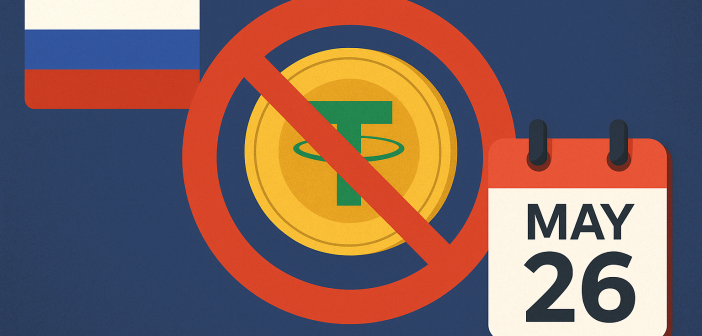The USDT ban Russia law will take effect on May 26, 2025, following a new directive from the Central Bank. The regulation targets foreign digital rights (FDRs), which include tokens issued outside Russia’s legal system. These rules make Tether’s USDT illegal for most users in the country.
Why the USDT Ban Russia Rule Was Passed
The Central Bank aims to protect investors from high-risk instruments. Only licensed institutions defined as qualified investors will be allowed to use FDRs, which include USDT.
The rules ban any digital right that:
-
Is linked to crypto not allowed in Russia
-
Comes from “unfriendly” issuers
-
Allows blocking or denial by the issuer
-
Can only be enforced in “unfriendly” countries
-
Includes references to foreign sanctions or courts
USDT does not meet these requirements.
Tether’s Policies Trigger the Ban
Tether, the company behind USDT, enforces strict AML and KYC checks. Redemption for US dollars is only available to verified users holding a minimum amount. Tether also follows U.S. sanctions and may freeze accounts or deny redemption without explanation.
In 2023, it froze wallets linked to the Garantex exchange. The Central Bank sees this as a threat to user security and autonomy, especially under foreign control.
What the USDT Ban Means for Users
The USDT ban Russia regulation blocks retail access to one of the most popular stablecoins. From May 26 onward:
-
Users can’t legally buy or hold USDT
-
Exchanges must delist it in Russia
-
Qualified firms may still access it under tight rules
This move pushes users toward domestic or friendly-issuer tokens.
Conclusion: USDT Ban Russia Tightens Crypto Controls
The USDT ban Russia policy reflects growing pressure to control foreign crypto use. As global sanctions evolve, Russia aims to limit exposure to external platforms. USDT is now the first major token to be excluded.
The decision will reshape stablecoin use across Russian markets in 2025 and beyond.




